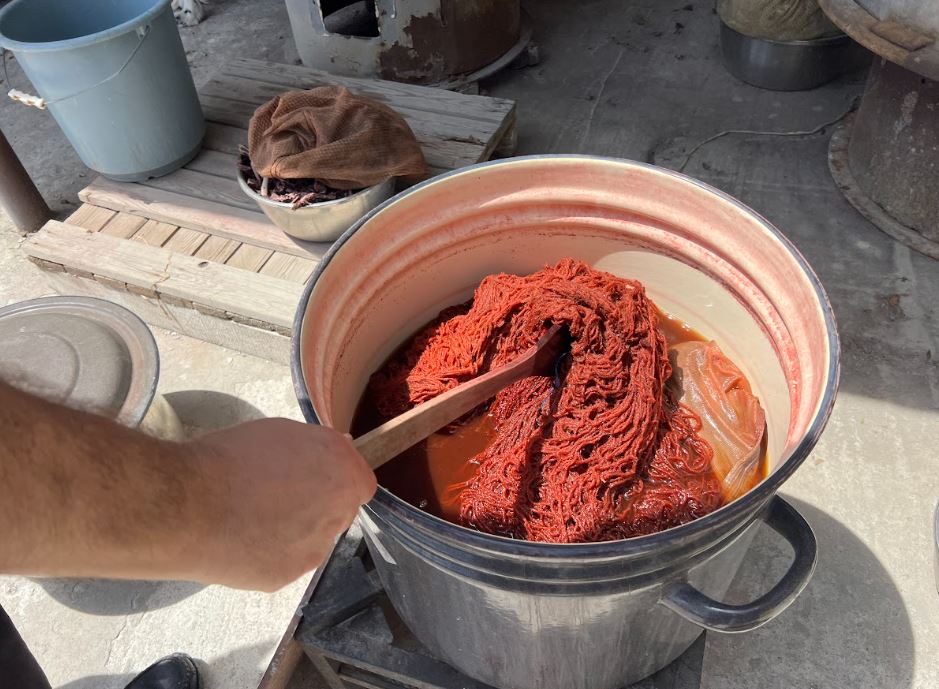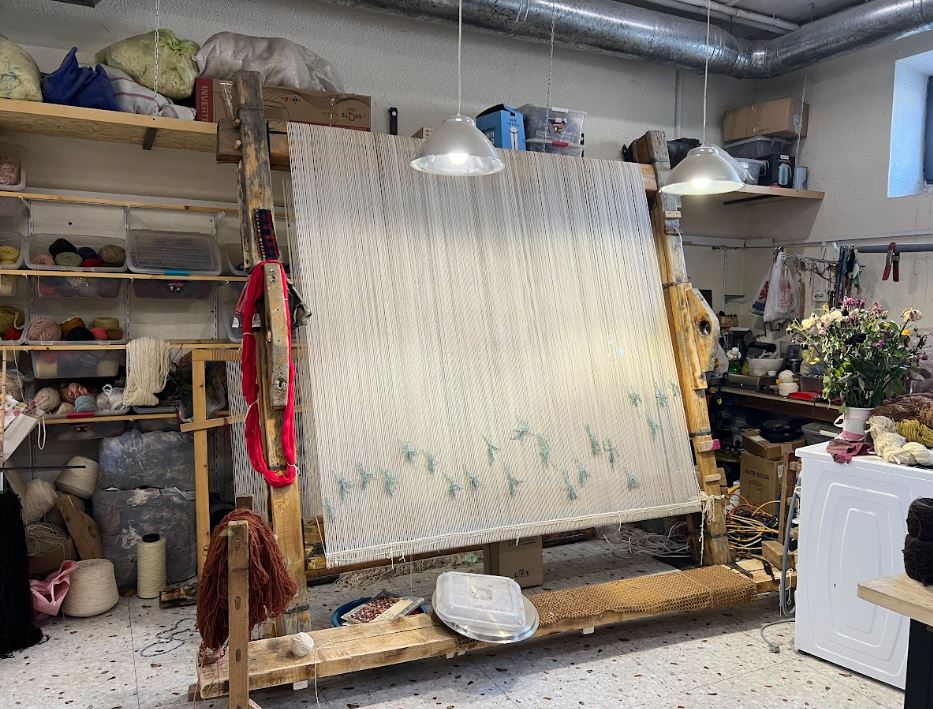By Vartan Esenyan
Armenia’s rug weaving tradition dates back to pre-Christian times. The craft is deeply woven in Armenian cultural heritage and traditions, and its intricacies have been handed down for centuries from one generation to the next.
One of the oldest surviving Armenian carpets is the “Gohar ” carpet, which was made in Nagorno-Karabakh and dates back to 1700 AD. It is currently on display in Yerevan’s Museum of History.
Armenian rugs are rich in motifs, symbols, and patterns, each carrying deep cultural, historical, and religious significance.
“An Armenian rug is well and alive no matter how old it seems and how faded it appears. It is a living testament to our people’s history, culture and lifestyle,” says Hayk Oltaci from Yerevan-based Woolway Studios, which specializes in antique rug restoration.
SYMBOLS & COLOR
Many Armenian rugs feature intricate geometric designs, crosses, stars, and other traditional motifs and symbols with cultural and religious significance. Flowers generally represent beauty, growth, and nature. Specific flowers may carry additional meanings – roses symbolize love, tulips representing paradise.
A central motif in many Armenian rugs is the Tree of Life which symbolizes immortality, growth, and a connection between the earthly and divine realms. It may appear as a stylized tree with branches and roots, conveying a sense of spiritual continuity and life’s cyclical nature. As far as animal motifs, lions symbolize strength, courage, and nobility. Birds signify freedom, the soul, or a connection between heaven and earth. Specific birds, like doves, represent peace, while eagles can signify power and vision.
Armenian rugs are remarkable for their highly saturated colors, notably red shades created with Armenian cochineal (vordan karmir, a bug facing a partial instinction in Armenia and currently being imported from Mexico). For that reason, Armenian rugs were called “red rugs” in the Middle Ages during Arab sovereignty.

The red color can also be obtained by grinding the roots of dyer’s madder (Rubia Tinctorum), a traditional plant-based dye that produces a range of red hues, from bright red to deep burgundy. Armenians use the very popular indigo imported from India to obtain blue shades (Indigofera Tinctoria) which is a plant-based dye that produces a range of blue shades, from light blue to deep navy.
Weld (Reseda Luteola) and Turmeric (Curcuma Longa) are also used for bright, clear. strong yellow. For black pigments, a tree native to Central America, logwood can produce a deep black color when combined with an iron mordant.
Logwood dye is one of the most prominent natural sources for black dye. Galls from oak trees, rich in tannins, can produce black when used with iron. The reaction between tannin-rich substances and iron salts (ferrous sulfate) results in a deep black dye. In old rugs, black color is often lost due to corrosion. The outer shells of walnuts contain juglone, a natural dye that can produce a dark brown to black color, especially when combined with iron mordants.
“When you look at an Armenian rug, you see Armenia, you see its soul, its history, its rich culture and traditions deeply interwoven with its Christian fate that captures your soul and cultivates your imagination.” says Mr. Oltaci who started learning the art of rug weaving and restoration at age 16 as an apprentice in Istanbul, his birthplace.
OLD TRADE IN A NEW WORLD
Today, the revival of the Armenian rug and textile industry uses all the gifts nature provides; from plant-based dyes to ample wool found from within the country.
For instance, Homeland Development Initiative Foundation (HDIF), a social enterprise NGO instrumental in creating a niche market for handmade Armenian products within the global economy, provides sustainable jobs for some 200 women crafters across 14 rural communities.

The organization hopes to overhaul Armenia’s wool supply chain to create new economic opportunities in rural communities, while also enhancing the quality of Armenian wool through innovation and sustainability. Currently nine out of ten textile workers in Armenia are women and the gender gap in this industry clearly demonstrates the dominance of female labor.
Shirak province in northern Armenia, which is one of the provinces most affected by unemployment and poverty is also home of Armenia’s famous purebred Balbas sheep. Recently, HDIF, in association with WoolWay launched a new program focusing on responsible wool production, partnering with the small Armenian Village of Darik, in Shirak, home to 1200 Balbas sheep. The program aims to promote ethical animal treatment, ensuring fair compensation for all involved and environmentally friendly practices throughout the wool supply chain.
Rug making requires mastery on thread dyeing and selecting the best yarn for crafting a quality and durable product. Many hours of tedious manual labor are required for dye preparation. As delivered, the wool thread must be truly washed to get rid of its lanolin (a wax secreted by the sebaceous glands of wool-bearing animals.) then with plant or insect-based dyes need to be treated with a mordant to produce a light and water-fast color.
“A carpet must be between 120-140 year-old, rare with traceable origin, one of a kind, handmade and with minimal damage and fading to attract collectors,” says Mr.Oltaci. He makes sure his rug restoration work can maintain the rug’s authenticity, if not such restoration might affect its value.
Different regions of Armenia produce rugs with unique characteristics. For example, Karabakh rugs are known for their bold designs and vivid colors, often featuring floral and animal motifs. Shirvan rugs typically have more intricate and detailed patterns, with a focus on geometric designs and rich colors. Lori-Pambak rugs are distinguished by their use of large-scale patterns and stylized human and animal figures.
The knot density (number of knots per square inch) is a critical factor in determining the rug’s quality and value. According to Mr. Oltaci, a square meter of handmade rug can take typically a month and half for standard thread thickness.
Armenian rug weaving art continues to thrive in Armenia and attracts some investments from abroad.
With supply chain consolidation and rigorous quality improvements on domestic natural yarns and dyes, high quality rugs are produced while old traditions are kept for their cultural and historical significance.
The post Intricate Patterns, Ancient Hands: The Art of Armenian Rugs appeared first on CIVILNET.